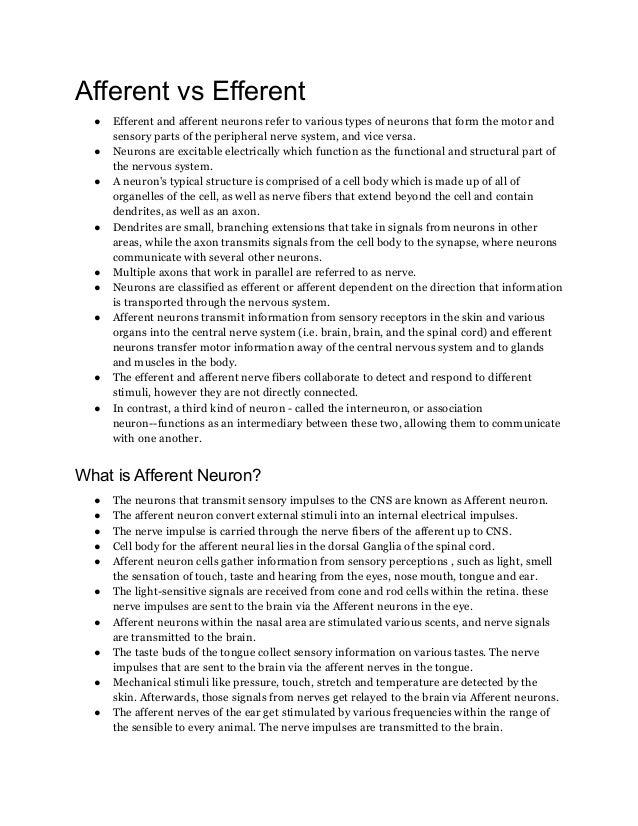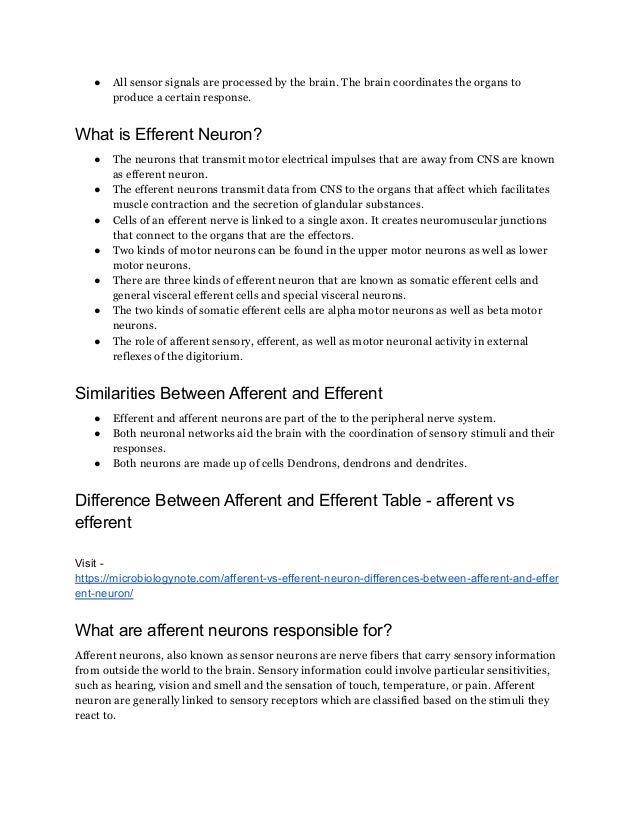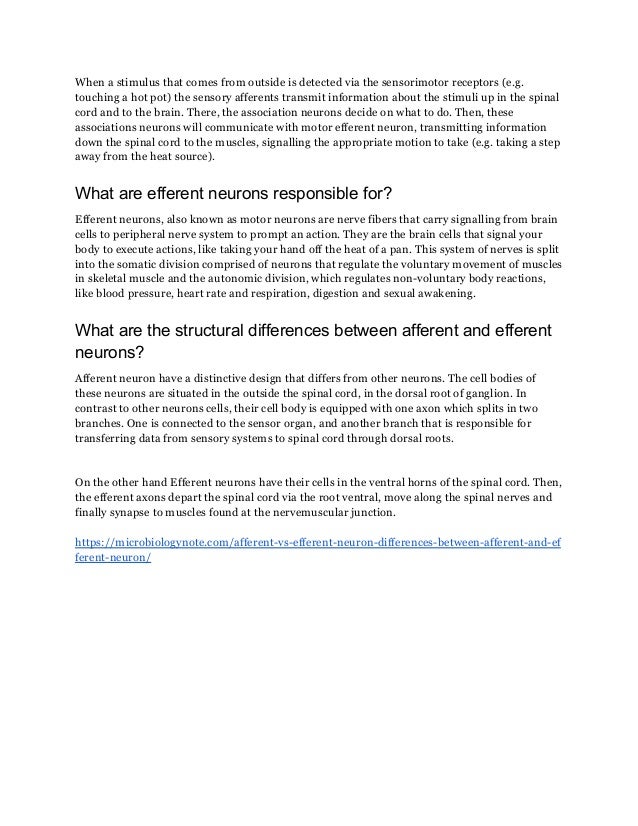Efferent and afferent neurons refer to various types of neurons that form the motor and sensory parts of the peripheral nerve system, and vice versa.
Neurons are excitable electrically which function as the functional and structural part of the nervous system.
A neuron’s typical structure is comprised of a cell body which is made up of all of organelles of the cell, as well as nerve fibers that extend beyond the cell and contain dendrites, as well as an axon.
https://microbiologynote.com/afferent-vs-efferent-neuron-differences-between-afferent-and-efferent-neuron/


